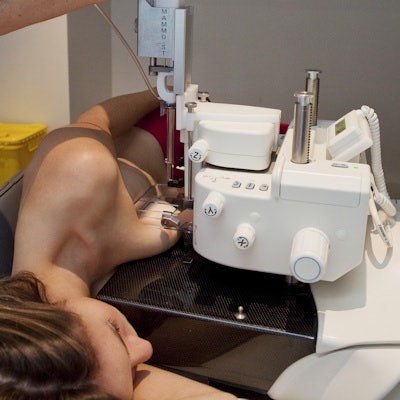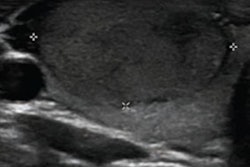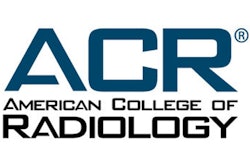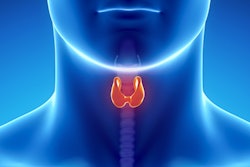
Adhering to the American College of Radiology (ACR) Thyroid Imaging Reporting and Data System (TI-RADS) or the American Thyroid Association (ATA) risk stratification guidelines decreases the number of thyroid biopsies and reduces healthcare costs, according to research presented at the recent annual meeting of the Canadian Association of Radiologists.
Both guidelines emphasize the use of ultrasound surveillance as a first step in evaluating thyroid nodules rather than immediate fine-needle aspiration (FNA), according to Dr. Bo Bao, a third-year radiology resident at the University of Alberta in Edmonton, Alberta. He presented findings of a retrospective analysis of 291 nodules that were biopsied with ultrasound guidance.
Bao noted that mortality due to thyroid cancer has remained stable for about a quarter century, with the majority of cases being the indolent papillary subtype. The mortality rate was 0.6 per 100,000 from 1992 to 2016, according to figures from Statistics Canada. Despite this statistic, more than 1 million people were overdiagnosed with thyroid cancer in 26 countries from 2008 to 2012 (Lancet Diabetes Endocrinol, June 2020, Vol. 8:6, pp. 468-470).
To address overdiagnosis and overtreatment of thyroid nodules, risk stratification tools are available to clinicians and radiologists to guide appropriate management. The ACR TI-RADS and ATA guidelines are risk stratification tools used to evaluate the need for an FNA biopsy for further assessment of suspicious nodules studies have found both tools effective in reducing unnecessary biopsies while appropriately identifying clinically significant malignancies, Bao explained.
Bao and colleagues conducted a survey in 2019 to investigate whether radiologists at their center adhered to ACR TI-RADS guidelines. They found that only 30% adhered to these guidelines.
"They may have a practice pattern that they are inclined to stick with rather than adopt new guidelines," Bao said.
The researchers identified 291 nodules that had been managed with an ultrasound-guided FNA biopsy in a six-month period (December 2016 to June 2017). Diagnostic ultrasound examinations were then performed by sonographers with the images interpreted by radiologists. FNA was then performed under ultrasound guidance, and the final cytopathology was interpreted by a cytopathologist.
Two radiologists were asked to independently reassess the ultrasound images based on the two sets of guidelines. When ACR TI-RADS was applied, the number of recommended follow-up ultrasound cases was 182 and the number of recommended FNA biopsy was 147.
"Following ACR TI-RADS, 50% of biopsies were unnecessary," Bao said. "All 27 cytology-proven malignancies would have been referred for follow-up ultrasound or FNA, based on the guideline." Applying ATA guidelines, 10% of nodules could have been avoided being biopsied, he added.
"We are not missing clinically significant malignancies by applying guidelines," Bao said. "The decision to biopsy is often inconsistent and sometimes unnecessary. An increased detection of thyroid nodules has led to an increased number of thyroid biopsies performed, which has substantial implications on healthcare resources."
The actual cost to the healthcare systems for management of the 291 thyroid nodules over a six-month period was close to $98,000. The estimated cost had ACR TI-RADS been followed would have been $54,000, with FNA accounting for 57% of the total cost. "The potential cost saving of implementing a risk-stratification guideline would have been up to $44,000 over a six-month period," Bao said.
Ultrasound surveillance of thyroid nodules is more cost-effective than immediate FNA, Bao noted, adding that patients would not have to undergo unnecessary intervention.
Dr. Daria Manos, professor of diagnostic radiology at Dalhousie University in Halifax, Nova Scotia, said the issue is developing strategies to encourage adherence to ACR TI-RADS guidelines, such that an FNA is only performed after following ACR TI-RADS guidelines.
"This study has really shown how costs can be reduced if ACR TI-RADS are followed," said Dr. Manos, reacting to the presentation. "The question is how to convince radiologists to use ACR TI-RADS."



















